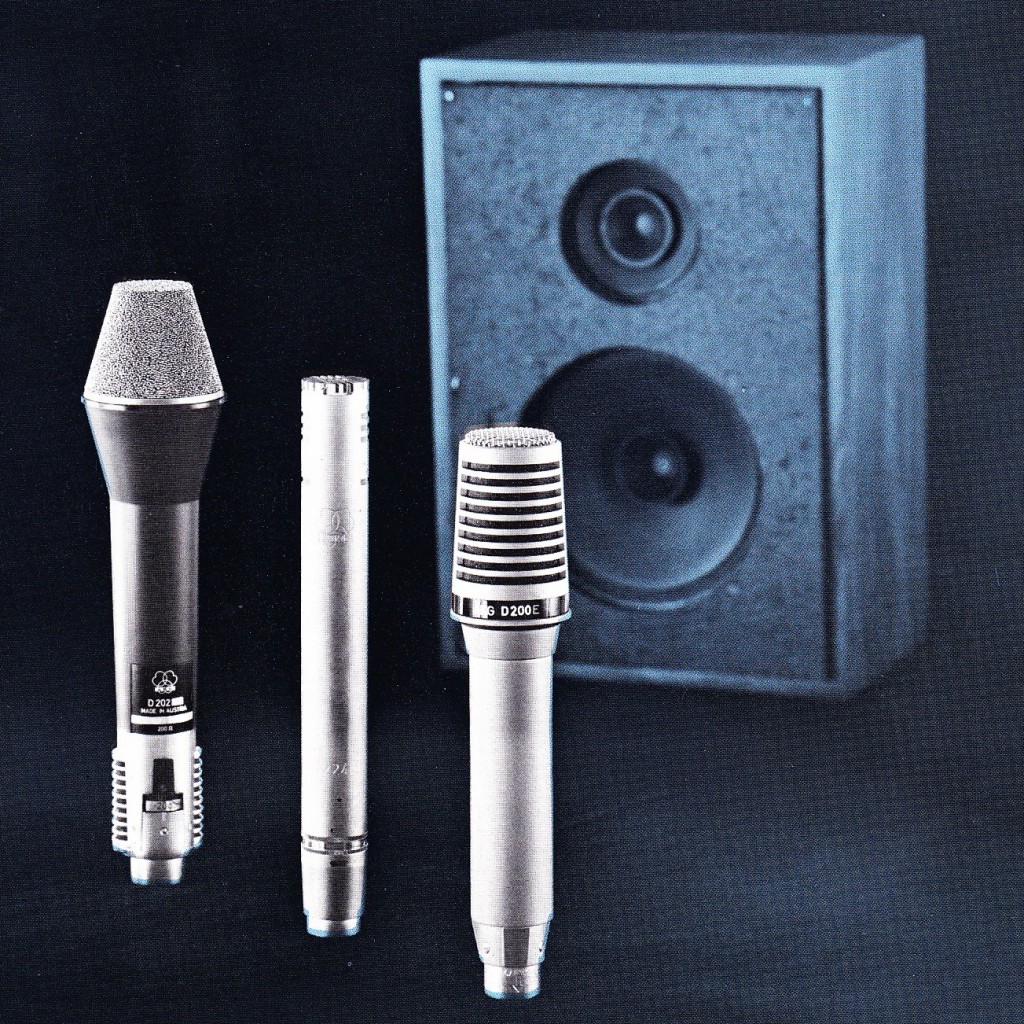 Download the 6pp 1970 catalog for AKG’s ‘Two-way” dynamic mics, the D-200E, D-202E, and D-224E:
Download the 6pp 1970 catalog for AKG’s ‘Two-way” dynamic mics, the D-200E, D-202E, and D-224E:
DOWNLOAD: AKG_2way_mic_1970
As the image above suggests, these operate exactly as you’d expect: there are separate ‘woofer’ and ‘tweeter’ elements, with a crossover at 500hz. Although the specs are quite good, i’ve never picked these up when I had the chance… just seems like they’ve gotta sound a little weird? Anyone? Anyone still using these? How do they compare to (x)?
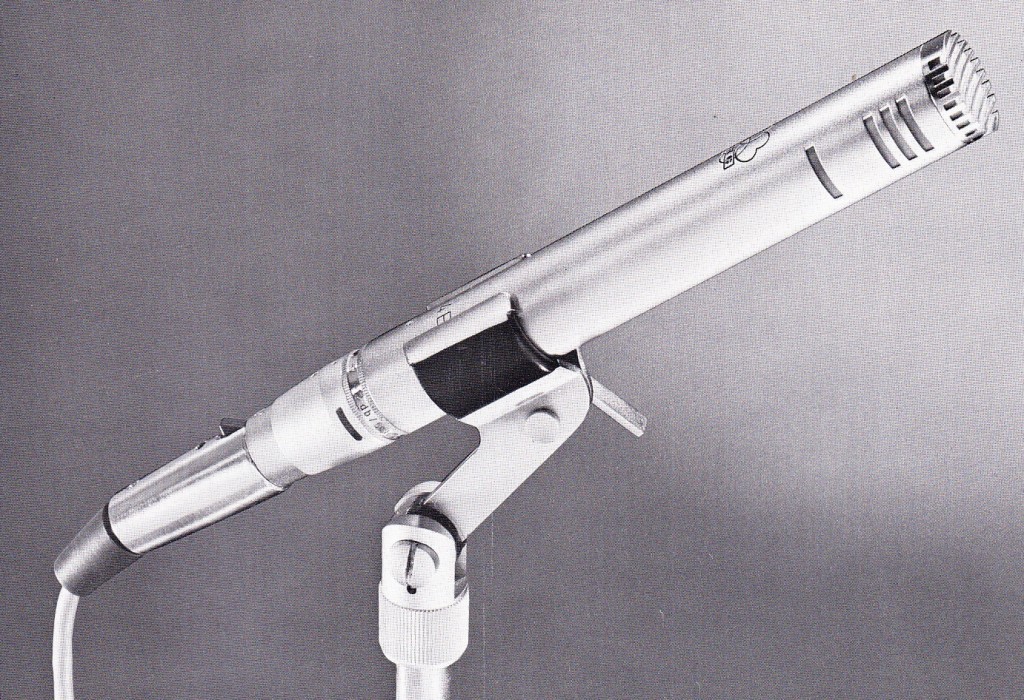
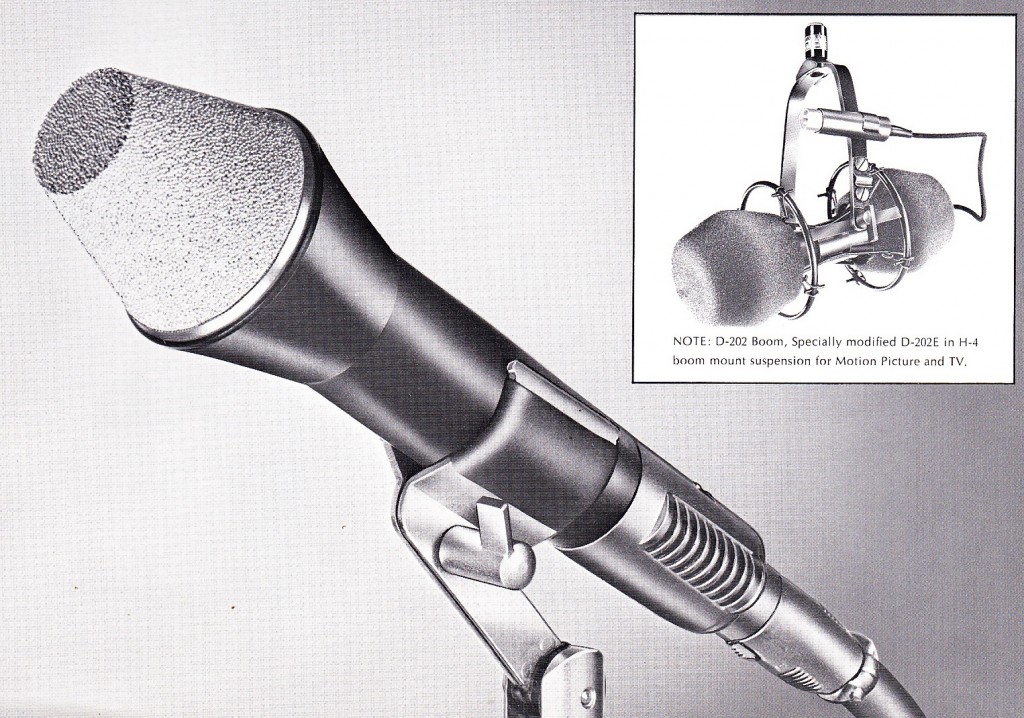
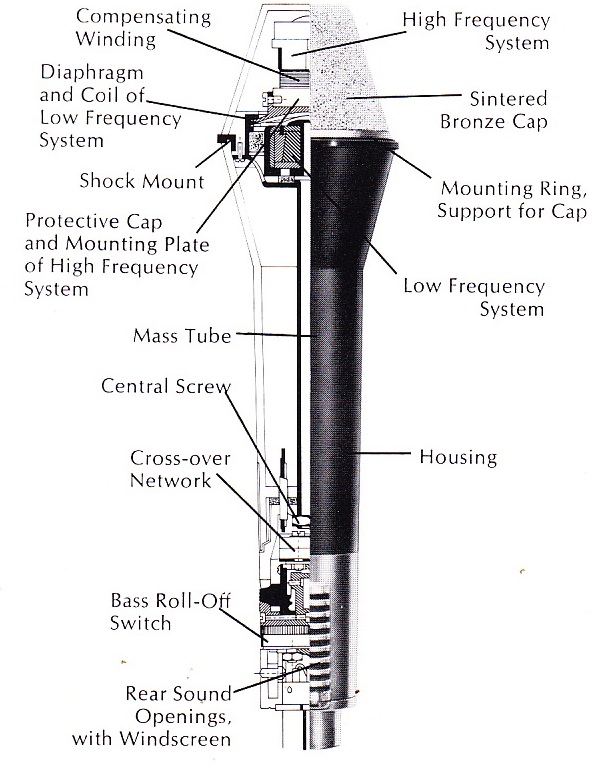
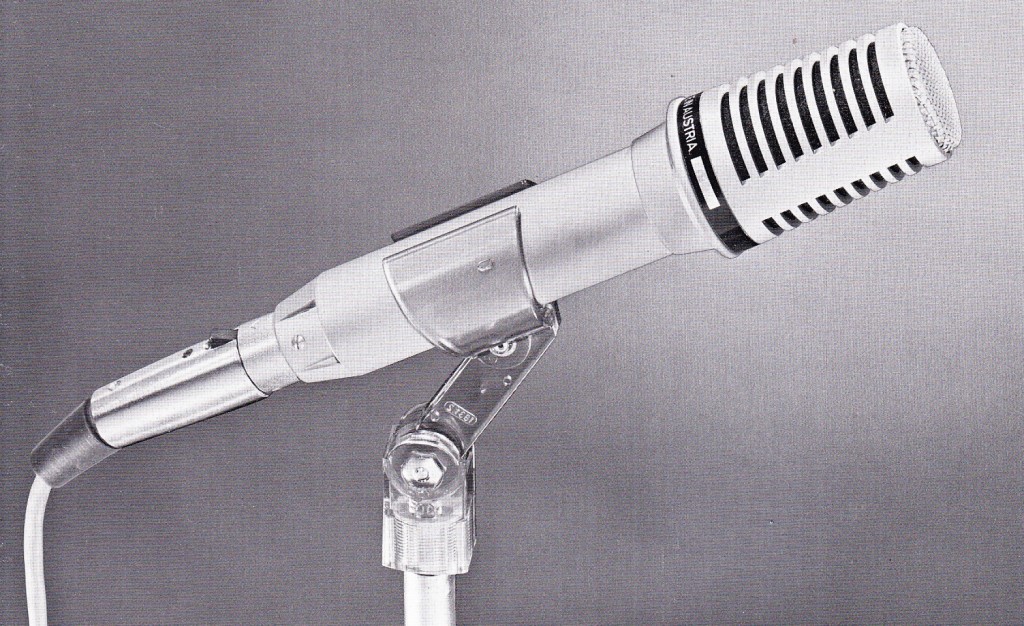
23 replies on “AKG’s “Two-Way” dual-transducer dynamic mics c. 1970”
OH MAN. Seeing all the AKG stuff you’ve been posting recently I’ve been hoping you’d get to these mics eventually. I’ve been super curious for quite some time, based only on secondary sources, never having used one. The two-way function is intriguing, and seems like maybe a natural progression from Electro Voice’s “Variable-D” system of dealing with proximity effect, bass response, and the excursion of low-frequency information in general.
Phill Brown, the English engineer famous for his work at Olympic Studios in the 60’s and with Talk Talk in the 80’s, wrote an excellent career reminiscence called Are We Still Rolling? a few years ago. The book is light on technical details, but he does discuss mic setups for various sessions throughout the years. He consistently mentions using the D-224E on snare drums, in company with the D-12 on kick – not to mention that era’s luxury of a U87 on the rest of the kit (and just about every other source). Extended top-end like a condenser (almost), and accurate low-frequency “thump” in the same microphone, perhaps?
On the other hand, I’ve been cultivating a recent obsession with the incredible album U.F.O. by Jim Sullivan, from 1969, recently re-released by Light In The Attic records. His story is best told <A HRef="https://www.youtube.com/watch?v=WsIouGN0Wr8"in this excellent mini-documentary, but pause the footage at around 2:14 and you’ll see what is ostensibly a photo from the sessions for this record, where Jim appears to be using a D-202E as his lead vocal mic. The general atmosphere of the photo – headphones on, baffles set around his acoustic guitar – leads me to believe this is an actual shot from the recording of the album. Was the D-202E popular as a lead vocal mic in what is seemingly a legit 70’s LA recording studio? (Jim recorded with members of the legendary Wrecking Crew, and the sound of the album certainly indicates that it was done in a professional facility by serious dudes).
So I guess I’m not providing any answers, just more food for thought. Hopefully I’ll experience some successful eBaying soon, and I’ll have some more concrete info….
Hi elio. Great stuff thank you! One of my all time fav records
Is a phil brown joint from that same era, “wednesdays child” by thomas f browne. I wonder…. C.
Carole King’s vocal mic on Tapestry was a D202.
wow. score another point for the D202.
found this:
http://www.prosoundweb.com/article/print/re_p_files_carole_king_lou_adler_hank_cicalo_in_session_at_am_records
awesome. RE-15 on kick!
I used to work in a fairly well stocked music studio in the mid ’70s – API 32×24 console with the 550 EQs. My favorite mic to put on the snare was the AKG-D224E.
It’s been almost 40 years since I left that studio (working live) and I’ve only run into one other D224E somewhere in eastern Europe and looked like someone had used it as a hammer since it was made. It was a rare mic and I’d still love to own one in great condition.
I shouldn’t admit this, but I tried to buy up all the AKG D224Es I could find on eBay a number of years ago. I bought them with the idea of matching a few, nut when it came time to sell off the ones I didn’t honestly need, the “mic hoarder” in me took over. As someone mentioned, they are great on snare but I like them on tom’s positioned as you would a Sennheiser 421. Since they are thinner, they don’t get whacked as often!
Anyone interested in akg rockets ,? Still
I bought my first pair of “real” microphones in 1970, a pair of AKG D-200’s.
I had wanted a pair of EV 676’s but the sales guy at the dealer (Gill Custom House in Chicago) told me that the 676 was an OK PA microphone but if I wanted to record music the D-200 would be a better choice. And they plugged right into my portable recorder at the time, a Tandberg! They sound clean and balanced.
I used the D-200s for at least a decade for this that and what not, eventually they wound up as the on -air microphones at some dinky FM station I worked at, replacing a couple of EV 635s. They died around 2000, beat to hell and one not working.
A few years back a very minty pair of D-202ES popped up on the bay, I wanted them badly and got them without overpaying IMHO. I found one more and now have 3 as part of my “stash.”
The D202ES is a very high quality dynamic, on par with Beyer M-88 of EV-RE 16.
Use a good preamp with extended gain and it will sound very mic.
Look for pictures of the British Parliement from the 70’s and 80’s, you’ll find the D202ES. I believe they were very popular with the BBC too.
The mics used in the House of Commons are D222s not D202. They are similar. The D202 was the standard mic for self-op and DJ on-air use in BBC local radio and network continuity suites. In local radio they were displaced by Beyer M201 and Neumann U87i found their way into the London cons in BH.
I have a 224E in fine shape that I quite like. I find it really shines on acoustic instruments, with full, even midrange, and smooth sounding high end that sits very nicely in a mix and takes sweetening EQ very well (if needed). A very natural sounding mic. Out of context, it can sound a little ‘un-hyped’ compared to a typical pencil condenser, which is a good thing. Great on violin and acoustic guitar. I don’t think I would risk trying it on snare. They are notoriously fragile, and I’ve seen many with the bottom element not working (thus no response below 500).
I’d say kind of like a dynamic version of a KM84.
I own both AKG 224s and 202s. I actually prefer the sound of the 202s slightly even though the 224s were marketed as the more hifi studio versions of these two way dynamic mics. There is something so smooth about the 202 in the high end compared to every other dynamic i’ve ever used. I use a pair as overheads for drums sometimes and they can sound terrific. They’re a bit hyped in the low end though. The biggest problem is that all of these 2 way AKG mics are almost as fragile as ribbon mics. One drop and you might destroy either of the transducers (or both) and like most older AKG dynamics, there is no repair if they break.
Hi guys. this is great. thanks to all of you who wrote in. this is exactly how i’d like all these rare-catalog-scan posts to be used – like the other more well-known web forums, but with the additional benefit of the archival materials and photos right at hand. Please keep spreading our site around and encourage more of yr audio-pals to write in with useful information like this. c.
Loved the D202 from my days in local radio back in the 70’s. They were and still are a great vocal microphone, although not so good for music in my opinion.
Have very fond memories of AKG D202ES rigged on toms & other percussion in a historic (now defunct) Athens studio. The quirky design of this dual-element series of microphones makes them show no (or more correctly, negligible) proximity effect, thus capturing a very accurate tone of an instrument in close-mic’ing techniques. Not many engineers are aware or understand the implications of this design. D202s excell on drums & percussion (tuned percussion, too), but are also capable of very nice flute & woodwind sounds. The D224E is also outstanding on woodwinds & tuned percussion, plus surprisingly good on acoustic guitars – in a “70s hi-fi” kind of way. Unsurprisingly, none really shine on bass instruments. Both models take additive eq very well.
The notorious fragility (esp. of D202) and complexity of these capsule systems (crossover et al.), paired with the non-existing replacement parts & support from AKG doesn’t help their popularity much. Most items sold nowdays on ebay have non-operating LF-capsules and/or crossovers.
However, a proper-operating D224/D202 is one of the finest dynamic microphones for fidelity recording, in the same league with Sennheiser MD441, Beyer M201 etc.
You can still see a couple of D202’s in use. At prime ministers question time. The Houses of Parliament UK!
The PM and leader of the opposition use them. Obviously both their mics work…
Had a few with either HF or LF capsules fail over the years. Used them in TV and radio. I liked them…….
It’s a common misconception – repeated here a few times – that the ‘Front Bench’ mics in the British House of Commons are AKGD202s. In fact they’re AKGD222s – the smaller and younger brother, but of the same family as the other D2xx mics.
I use AKG D224 on almost every recording session. They are the most hi-fi dynamic microphones I’ve ever heard. Nothing compares to them. Even Beyer m201 (a very good microphone btw) is thin in low end compared to them. The mics have some disadvantages too. Thy are fragile and it’s impossible to align other microphones to them because their phase response is unusual due to double capsule design.
No one ever mentions the D224e Austrian Engraved Left handed version of these mics, I wonder why?
I have a D202 ES. Lovely mic. Used them exclusively in the late 70s for recording VOs for radio commercials. They were teamed up with Neve valve compressors and never let us down.
I couldn’t resist this old thread. I’ve been buying up a lot of D200E’s lately and looking for D202’s. Most of my work is live. Very little time in the studio. The 200’s are great to have in my back pocket for all the deaf guitar players trying to hurt people with upper mid range saturation. They have an almost magical way of smoothing it out. I don’t use them every time because they’re delicate. But I can tell about two seconds after a player turns their rig on whether it will be one of those days.
I’ve been using D202 mics for a few years with Forum Neue Vokalmusik for performances of Stockhausen’s “Stimmung” based on them being the favoured mics of the original ensemble Collegium Vocale Köln, who performed the piece over 100 times in the 60s and 70s.
We haven’t tried the DPA d:facto or anything quite so high end, but the D202 works brilliantly for this piece. The singers use a lot of overtones, and there’s a huge dynamic range as well as singing and speaking. The handling noise is minimal, and the dual diaphragm design means there’s virtually no popping.
Hi and thank you very much for all the information I found here, both in the article and comments! Recently I’ve been given two Telefunken M611. They have a double capsule system just like the AKG D200, but with a different body. I suppose, they have been manufactured by AKG and branded Telefunken. One of the mics had a dead high frequency element. I had to solder a hair thin capsule wire only visible under a magnifying glass. Now both mics are doing fine. Looking forward to test them during the next recording session!
I inherited a pair of D200E’s, and one is fine, and the other has no high end. After reading a little bit, it seems the high freq capsule is broken or disconnected. Anyone know anything about replacing that part? Or is this mic pretty much a landfill item?